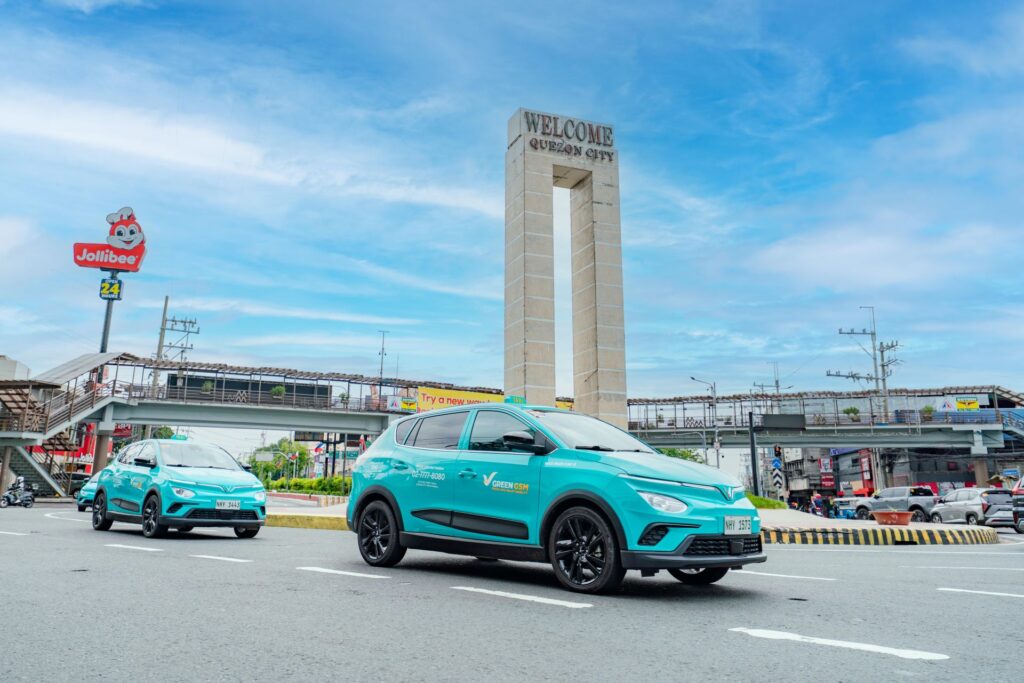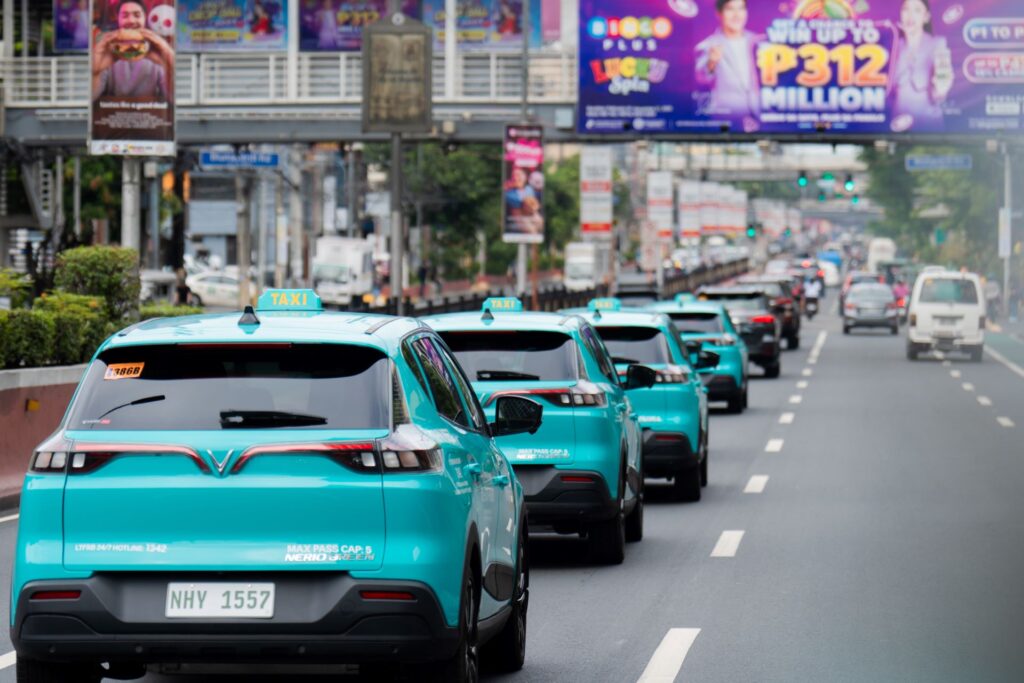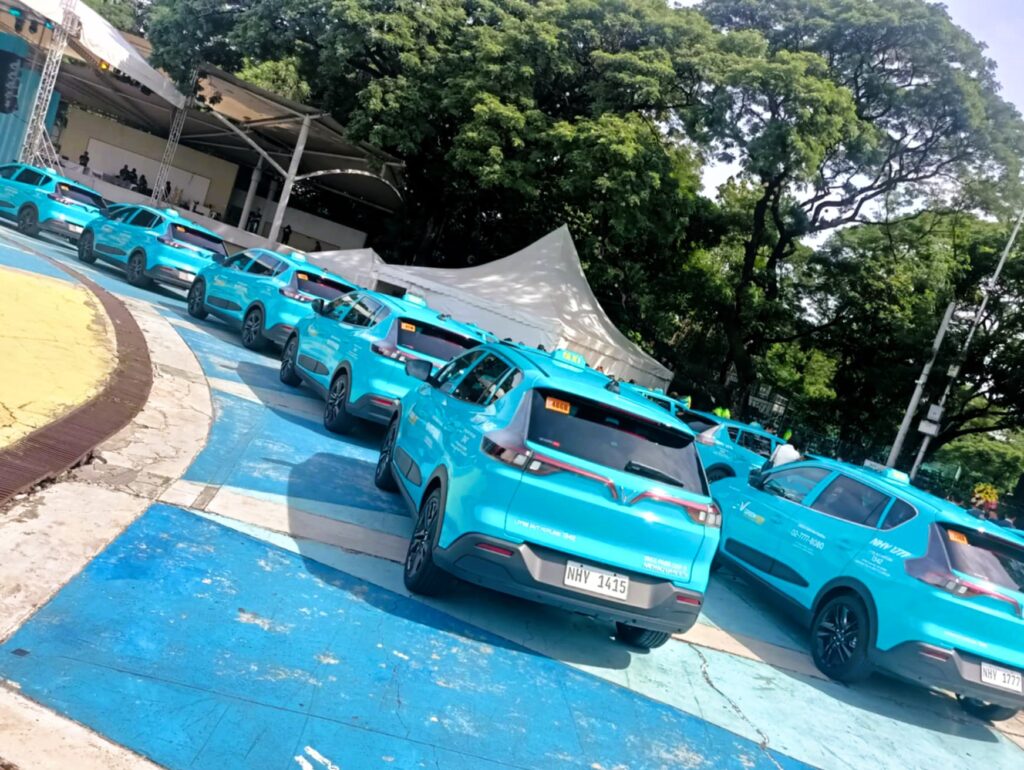In the heart of Metro Manila, a quiet revolution is unfolding. The gentle hum of Green GSM’s VinFast-made electric taxis is transforming electric mobility from an abstract concept into a familiar part of everyday life. This subtle shift is making the idea of cleaner, quieter transport feel more accessible—one ride at a time.
For many residents of Metro Manila, electric mobility isn’t being introduced through glossy showrooms or grand policy speeches. Instead, it’s arriving on the streets—visible, tangible, and real—through the blue-and-green VinFast electric taxis operated by Green GSM, the Philippines’ pioneering all-electric ride-hailing service. Since their launch in June, these vehicles have begun to populate daily traffic, offering Filipinos an intimate glimpse of what a quieter, greener future could feel like.
The first few minutes of a rider’s journey are often marked by curiosity. Passengers ask about the vehicle’s range, how much it costs to operate, or whether it’s different from a conventional taxi. Many are surprised to discover that it feels just the same—yet noticeably different—in a good way. The silence, the smoothness, the absence of fumes—all make an impression.
Drivers have come to see these questions as a natural part of their day. Many have been trained to explain the basics of electric vehicles, but most conversations flow effortlessly. “I feel less tired,” shares Tarwin S., 51, a former gasoline taxi driver now working with Green GSM. “The costs are lower, and I take home more earnings.”
In a city where air quality and traffic congestion are ongoing challenges, even brief moments of peaceful, quiet travel can alter perceptions. When people experience the benefits firsthand, their skepticism diminishes, and the idea of owning or using electric vehicles begins to seem less distant.
This process isn’t unique to Manila. Cities across China, for example, started by electrifying public taxis and buses, gradually familiarizing residents with the quiet hum of EVs long before private ownership became widespread. Manila’s growing fleet of Green GSM taxis appears to follow a similar path—proof that familiarity is often the first step toward acceptance.
Building the Infrastructure of Confidence
Yet, curiosity alone won’t sustain this transition. For electric vehicles to become an integral part of our transportation system, they must be supported by reliable, visible infrastructure.
VinFast, the Vietnamese automaker behind these taxis, is committed to making that happen. The company’s vision extends beyond just producing EVs; it’s about creating an entire ecosystem. Partnering with global EV charging station developer V-Green, VinFast aims to install around 15,000 charging ports nationwide. It’s also working to expand its network of dealerships and authorized service centers—addressing the everyday doubts that often hinder adoption.
When charging stations are easy to locate in malls, offices, and highways, range anxiety begins to fade. When technicians are trained and equipped to handle repairs confidently, repairs no longer seem uncertain. When financing options are accessible—through partnerships with local banks—ownership becomes a realistic goal.
The visible presence of charging stations in everyday spaces sends a reassuring message: electric mobility isn’t just a policy goal; it’s a tangible, sustainable reality taking shape. These stations, quietly embedded in our daily routines, symbolize progress—turning abstract plans into concrete, approachable solutions.
This build-out aligns with the Philippine government’s Electric Vehicle Industry Development Act (EVIDA), which promotes cleaner transport and reduced emissions. Each new charging station creates employment opportunities for electricians, engineers, and software specialists—linking green technology to local skills and economic growth.
A Steady, Silent Transformation
Change rarely happens overnight. The shift toward electric mobility will likely occur through small, steady steps—each functioning charger, each well-trained driver, each quiet trip adding to a collective momentum.
In time, the most compelling evidence of progress may not be found in numbers or announcements but in the city’s soundscape itself. A gradual disappearance of the roar of engines, replaced by a gentle, almost imperceptible silence, signals that a transformation is already underway.
This isn’t merely a technological upgrade; it’s a cultural shift—one that whispers of a cleaner, more sustainable future. It’s a future where mobility is silent, efficient, and accessible—becoming part of Manila’s everyday rhythm.
 Power Wheels Magazine A Notch Above
Power Wheels Magazine A Notch Above



